BY LINCOLN ANDERSON | Three hundred million dollars in “alienation mitigation” funds.
That’s just one of the things that the city was hiding behind its heavy redactions of key documents concerning the East Side Coastal Resiliency project.
Last week, shortly after East River Park advocates brought an Article 78 community lawsuit against the mayor, his administration relented and revealed more parts of two reports that had previously been blacked out.
The two documents, both from 2018, include a so-called “value engineering study” and an “elevated park alternative feasibility analysis.” The V.E.S. compared two resiliency plans for East River Park — an initial low-impact plan, which was largely accepted by the community, and the plan the city eventually replaced it with, which would obliterate the existing park by burying it under tons of “fill” to raise the park by up to 10 feet, basically creating a gigantic levee.
The V.E.S., which is about 350 pages long, was allegedly the basis for the elevated park feasibility analysis, which is about 40 pages.
Advocates are still sifting through and trying to make sense of the updated documents compared to the prior more-redacted versions.
But Page 18, for one, of the updated elevated park feasibility analysis, released last week, includes a telling line that was previously redacted from a section called the “ESCR Baseline to Elevated Park Cost Comparison.” The line notes an “alienation mitigation allowance” of $300 million for the earlier, low-impact plan — but $0 in such funds for the elevated park plan.
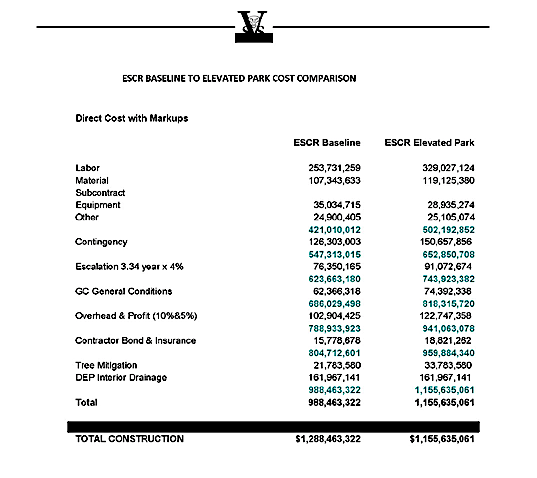
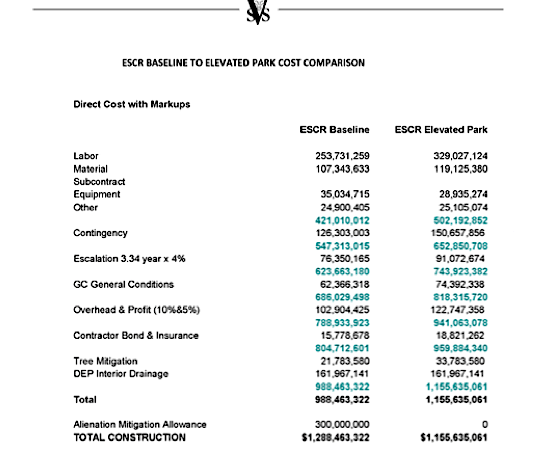
State legislators, including state Senators Brad Hoylman and Brian Kavanagh and Assemblymembers Harvey Epstein and Yuh-Line Niou, have all previously said that the coastal resiliency project should undergo a vote on alienation in the state Legislature, which is required when a public park is removed from park use for any reason, in this case, a reconstruction project.
Tommy Loeb, a steering committee member of East River Park ACTION, one of the lawsuit plaintiffs, has been poring over the updated pages. The group tapped Loeb to speak to The Village Sun about what they are making of the new information.
Loeb said the issue behind the newly revealed “alienation mitigation allowance” budget line item is significant.
“The biggest thing we pull out of it was they were very concerned about alienation,” he said. “They were very afraid of our lawsuit. They acknowledge the original plan was a flood plan, it wasn’t a park plan — that would have subjected them to alienation. Their argument was that this [elevated park] plan was a park plan not a flood plan.”
The lawsuit Loeb was referring to above was the one that Village District Leader Arthur Schwartz filed against the E.S.C.R. project last year, arguing that alienation was required for it, but a judge tossed it out. But Schwartz is now getting set to file an appeal.
Meanwhile, attorney Jack Lester, who sued on behalf of the opponents to lift the redactions, won a famous New York City park alienation lawsuit in 2001, arguing against the need to build a water-filtration plant in Van Cortlandt Park in the Bronx. Lester is currently informally advising the East River Park plaintiffs about alienation as it pertains to their case.
Loeb formerly worked for Councilmember Miriam Friedlander and state Senator Manfred Ohrenstein for a total of 35 years, so knows his way around government and projects — and bureaucracy. The way he reads it, alienation mitigation money refers to funds that would be made available to the community to offset the loss of the use of East River Park during the construction period.
“Alienation was associated with a lot of money, $300 million,” he said, “and that money would have gone to the community over the next five years.
“The word ‘alienation’ really worries them,” he noted of City Hall. “They don’t want to spend that money.”
And yet, of the two alternatives, the E.S.C.R. project would have the higher cost — more than $130 million more expensive than the earlier project that would not have raised the park — according to the feasibility report.
So, if there were an alienation vote for the project, the state lawmakers could conceivably vote not to alienate the park — meaning they could block the project — or at least push for more oversight, monitoring and mitigation. An alienation vote would definitely put the pols on the hot seat, though, forcing them to take a public stance, one way or the other.
However, the politicians have not been outspoken on the issue lately, Loeb charged.
“Our state elected officials — Hoylman, Epstein, Kavanagh, Niou — all initially said they support alienation,” he noted, “and then they walked away.
“We still have not figured out why all the politicians walked away,” he said. “Is it just because the councilmember supports the plan?”
He was referring to Councilmember Carlina Rivera, whose district contains East River Park and who is a staunch supporter of the current E.S.C.R. plan to raise the park.
“It’s terrible politics,” Loeb said. “Having worked on the Lower East Side for 45 years, as I have, unfortunately this is very indicative of Lower East Side politics.”
Also raising eyebrows, Dianne Morales, a candidate for mayor, was a plaintiff in the Article 78 community lawsuit to unveil the redactions — yet then asked for her name to be removed. Reportedly, an endorsement may have been at stake. The Village Sun reached out for comment to Morales’s campaign, which did not immediately respond.
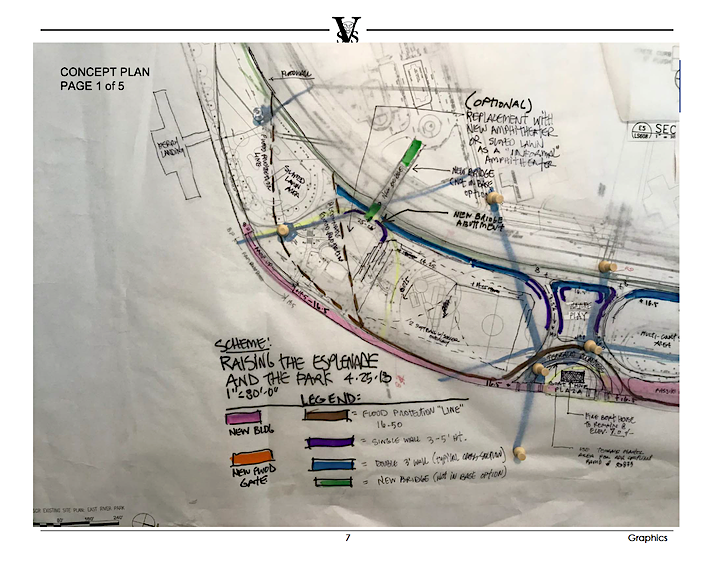
Loeb said one justification the city gave for preferring the elevated plan was the assertion that it could be completed faster. However, he said of jacking up an entire 2.4-mile-long park 8 to 10 feet, “It’s never been done.”
Another reason the city doesn’t want to do the earlier, simpler plan is said to involve a Con Ed power line that runs from E. 14th St. down through the park and powers Wall Street and all of Lower Manhattan. Apparently, Con Ed says it needs to maintain access to its tunnel that runs below the path between the F.D.R. Drive and the park. This issue has been mentioned in discussions but is still blacked out in the reports, according to Loeb.
“They said the original resiliency project could disturb that power line,” he said. “It’s still all redacted. We have no idea if it’s a red herring or if it’s real. They say it’s this critical Homeland Security item. If that is the issue, let us talk to the experts, so we know what we’re talking about.”
Loeb thinks another red herring was the city’s concern that the original plan — which called for a winding series of berms to be built along the east side of the F.D.R. Drive — would have shut down a lane of traffic on the highway due to dump trucks needing to shuttle in tons of fill soil. On the other hand, for the E.S.C.R. project, one option calls for barges to ferry in the new dirt via the East River, meaning less use of the F.D.R.
But, for his part, Loeb does not think F.D.R. traffic would have been impacted by the first plan alternative.
Also, the earlier plan would allegedly have required pile-driving during overnight hours to secure the berms and, in other areas, build walls. But Loeb, a 45-year resident of the East River Housing co-op at the east end of Grand St., said he would prefer that option to the alternative.
“I’d rather have pile-driving at night,” he said, “than five years of destruction of the park.”
In fact, Loeb noted, what community activists originally wanted was for the eastern lanes of the F.D.R. to be decked over, and for the deck to be made part of the park, “and make that the flood wall. But they never looked at it.”
So far, only two bidders have come forward to do the E.S.C.R. project. One, a smaller, out-of-town group that Loeb said locals are not familiar with, came in with an offer $53 million above the estimate of the engineers that did the park reports. The bid by the other, Tully Construction, was $117 million over.
“This is where Scott Stringer comes in,” Loeb noted. “He has to approve this project at some point.”
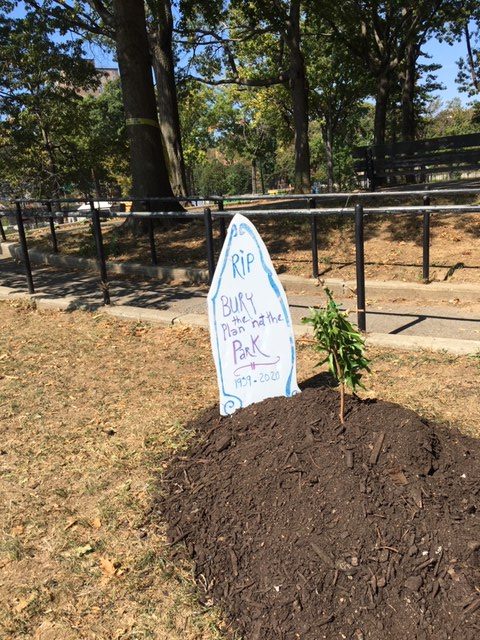
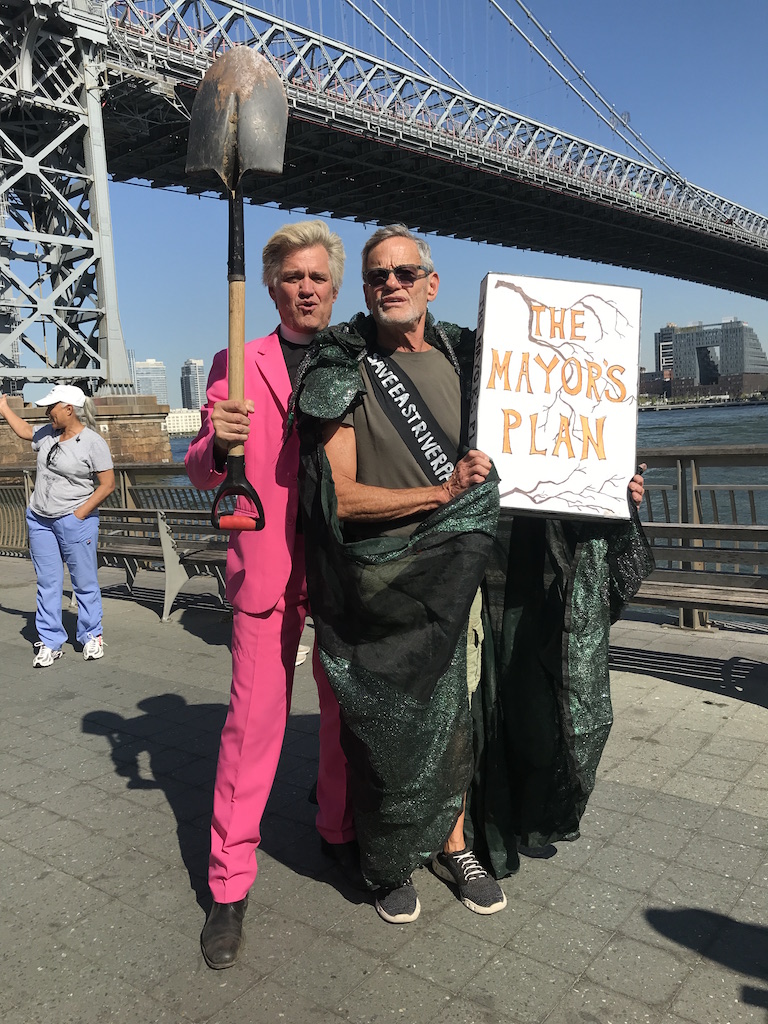
But Stringer has been silent on East River Park so far.
“Crickets,” Loeb said. “We’ve asked him to review the project given his role as comptroller.”
There is heavy skepticism among the E.S.C.R. project’s opponents that the work on East River Park, which stretches from Montgomery St. to E. 12th St., could even be completed in five years.
“In 2001, the park’s esplanade almost collapsed,” Loeb recalled. “It took them 10 years just to do the esplanade. We don’t have any confidence that the resiliency project could be done within the time line.”
Indeed, former Parks Commissioner Henry Stern had assured that the East River Park promenade work would take only two years.
Loeb added that the coastal resiliency project’s massive price tag would mainly be footed by city taxpayers: Only about $350 million of the $1.45 billion job is federal money. In short, New Yorkers deserve to know exactly what they’re paying for and why, he said.
“We’re asking for a City Council hearing on this project, in which they can bring these people under oath and they can explain all this,” Loeb said. “We’re asking for Councilmember [Justin] Brannan, the chairperson of the Parks Committee, to hold a hearing in which city officials can be called in to discuss the redactions.”
Also now unredacted in the materials are the names of many construction company officials and consultants that attended meetings on the park project. These include the likes of AKRF, Siteworks, “LAZ ENG,” Slocum Construction Consulting, MNLA, CH2M Jacobs, MVVA, One Architecture, HDR, Mueser Rutledge Consulting Engineers and so on.
Asked what the opponents are making of this new alphabet soup of information, Loeb said in exasperation, “We’re a bunch of volunteers. Now we have to do all the research. How do I know if they have any conflicts?”
This onus should not be put on community laypersons but on experts, he argued.
“All we’re asking for right now,” he said, “is a truly independent look at this by qualified people who the city has not handpicked.”
Meanwhile, the activists continue to do their best to decipher the newly visible information in the reports.
“Luckily, I’m retired,” Loeb said. “You can’t imagine the amount of time we’ve had to put into this. I can literally say I put at least 15 hours a week into this, along with every member of the [East River Park ACTION] steering committee.”
Even the original plan would have totally overhauled 30 percent of the existing park, but to the E.S.C.R. opponents, that was a much better option.
“We just don’t get it, why they need to destroy every living thing in this park,” Loeb said. “It would be three-and-a-half years to do the landfill portion; then they would have to wait for 1 million tons of landfill to settle — six to nine months — before they can build a new park on top of it. They admit it’s never been done anywhere in the world, this amount.”
Basically, as Loeb explained it, while the initial East Side resiliency project was for storm protection only, the current project is intended to protect against both storm protection and sea-level rise.
Attorney Schwartz, who is a candidate for City Council District 3, said that, like everyone else, he is still processing all the newly released sections of the East River Park reports from 2018.
“I’m going to try to weave it into my appeal motion,” he said.
He said the new information simply confirms what he had already been arguing, namely, “They had mentioned alienation earlier, pre-2018.”
By reconfiguring the resiliency project to turn it into a humongous levee that would boost the park above sea-level rise, Schwarz said, “They could call it a park plan versus a flood-protection plan,” and so get around having to hold an alienation vote in Albany.
The park itself, however, was not damaged badly by Hurricane Sandy in 2012, Loeb said. A few trees were harmed by saltwater and had to be felled, but that was the worst of it, he said.
Meanwhile, all the public housing complexes bordering the length of East River Park — Baruch, Riis, Wald — have had or are currently having flood walls, 3 feet to 6 feet high, installed around them, he noted.
Loeb hearkened back to an earlier waterfront battle — though across town on the West Side — when the community fought back against a seemingly unstoppable mega-project and won.
“Westway — Marcy Benstock took that issue and absolutely beat it to death until people fell in line,” he recalled. “She’s my model.”
Westway called for an eight-lane highway tunnel to be built under 100 acres of new landfill extended out into the Hudson River, on top of which there would have been residential and commercial development, plus parkland.
Loeb also still remembers the words of his mentor, the late Friedlander.
“Nobody ran Miriam,” he said. “Miriam said when you call the city, the first answer is always no. ‘No is not an answer,’ she said. If writing a letter and a phone call is not enough, that’s when you become a pain in the ass. I think the city underestimated how important the park is to the community.”
On Sun., April 18, the opponents will hold a “Save East River Park” march, starting at noon at Tompkins Square Park and going to the East River Park amphitheater for a rally at 1:30 p.m.
In February, Erin Hussein entered the District 2 Democratic primary race against Rivera, charging that voters in the East Side district feel “disenfranchised.” She said the East River Park resiliency project is the top issue where this is being felt.
“The park is a big one,” she said at the time. “The de Blasio / Carlina Rivera plan for the park seems to be the opposite of what the community wants.”
Asked her thoughts on the park project reports being released last week with fewer redactions, Hussein said, like others, she’s still reading through it all.
“I don’t have much of a comment on the report itself until I finish reading it,” she said. “At first glance, it seems to be about choosing cars on the F.D.R. over the park and the people who use it. I was hopeful that the Department of Design and Construction would be more transparent; but the fact is the only reason for this sudden new transparency is the tireless work by East River Park ACTION and community activists, plus you, Bowery Boogie and the Article 78 lawsuit. Our local political leadership failed the park and the community and then claimed credit for the efforts of dedicated activists fighting to save the park from that failure.”

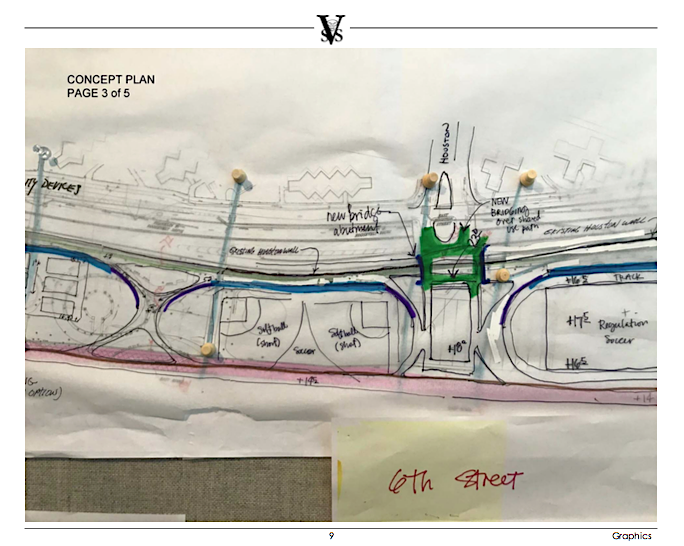
“Also now unredacted in the materials are the names of many construction company officials and consultants that attended meetings on the park project. These include the likes of AKRF, Siteworks, “LAZ ENG,” Slocum Construction Consulting, MNLA, CH2M Jacobs, MVVA, One Architecture, HDR, Mueser Rutledge Consulting Engineers and so on.”
This sure looks to me that de Blasio’s never stopped his “agents of the city” policy and has a new method for approving these contracts in total secrecy. And also that he was able to get away with this by using/exploiting his pandemic emergency powers that he still possesses.
Thank you for this and thank you Tommy and the team for all the work that you do.
TREMENDOUS ARTICLE. I’ll be out there on Sunday!
Great article! One thing not mentioned: The reference to the wonderful Marcy Benstock and her work halting the Westway disaster, a plan which included 8 lanes of traffic under 100 acres of landfill GOING OUT INTO THE HUDSON–ON TOP OF WHICH THERE WOULD BE RESIDENTIAL AND COMMERCIAL DEVELOPMENT (oh yeah, btw, also parkland.) That’s my fear here — splinter skyscrapers trashing up our majestic, historic river. (cf: check out the ugliness of Hudson Yards and Diller Island.) These guys wanna cover over our River for $$$ — theirs! Go, Tommy Loeb and Co! Save Our City.
The Westway fight for sensible public spending priorities was won in Congress, by hardworking transit advocates and environmental leaders who couldn’t be bought. We don’t need more offshore boondoggles in our rivers masquerading as parks. We do need more decision-makers who make policy choices on the merits, for the good of all — not based on “mitigation” quid pro quos.